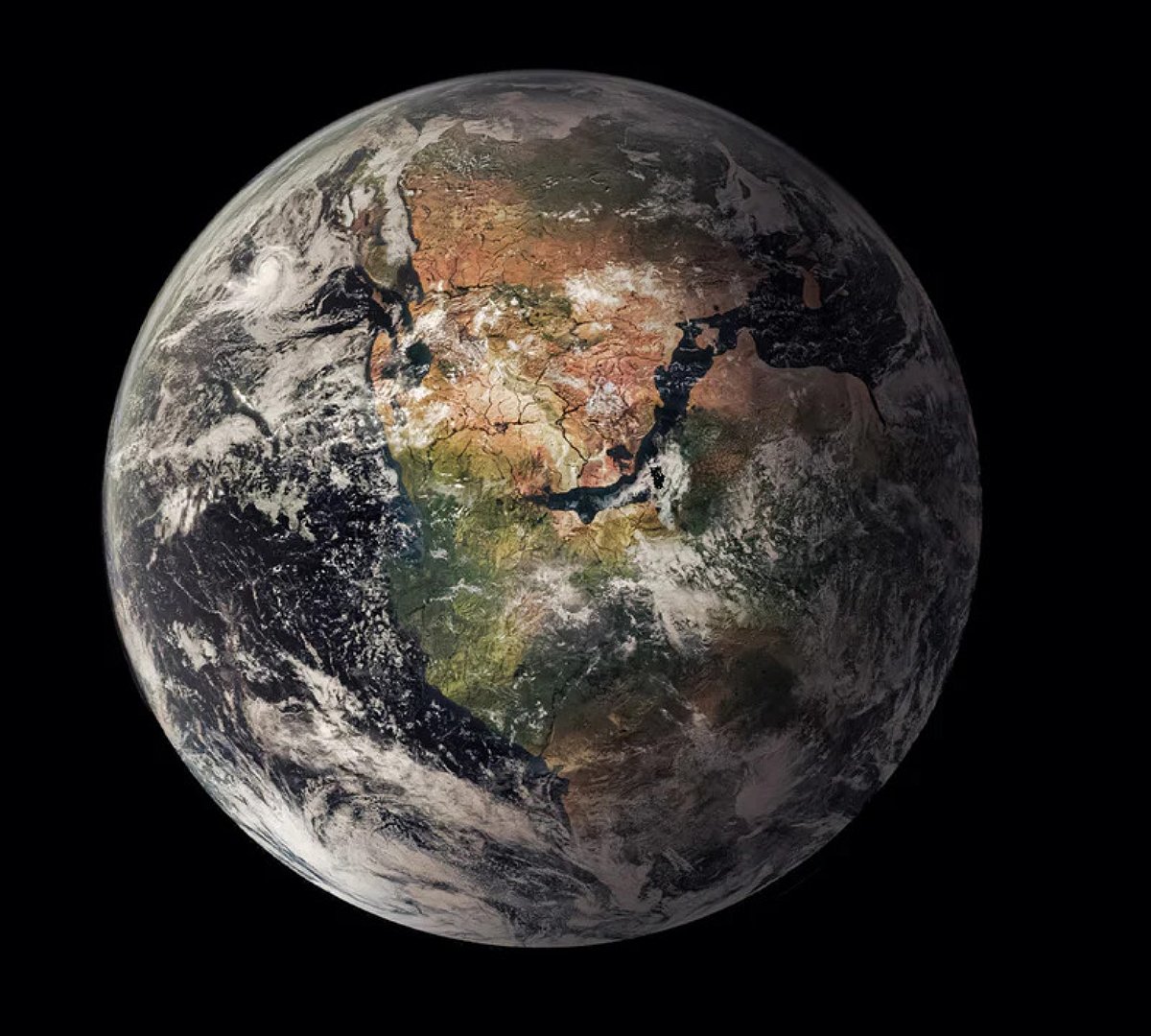A recent study found that Earth’s mantle, the inner layer of our planet that lies between our planet’s outer crust and the outer core of molten materials, has a division or “division” that overlaps with the Pacific Ring of Fire. There is a 40,000 km arc around the ocean, which is home to 75% of the world’s active volcanoes.
According to research published in the journal Nature Geoscience, partition created two fields. The first area, called the African area, starts from the east coast of Asia and Australia and extends through Europe, Africa and the Atlantic to the west coast of North America. The other part, called the Pacific area, covers the ocean region that has less chemical diversity (isotopes) than the other area.
The paper’s first author, researcher Luc Doucet of Curtin University in Australia, told Live Science that this ancient “split” reflects the last two supercontinental cycles. “What we are observing today is basically what happened during the passage through Rodinia [formado há 1,2 bilhão de anos e fragmentado há 750 milhões de anos] It gave rise to Pangea and then the breakup of Pangea 200 million years ago.
Confirming that Earth’s mantle is divided into two areas
The process that led to the splitting of the mantle involved subduction, a phenomenon that involves friction between tectonic plates and where oceanic crust slides beneath continents as a supercontinent forms. Doucet explained that the movement sinks continental rocks and their elements into the mantle, creating a kind of funnel that “concentrates everything underneath the supercontinent.”
To test the hypothesis that this funnel effect persisted even after the breakup of Pangea, the authors analyzed 3,983 samples from mid-ocean ridges (underwater mountain ranges) where magma from the shallow mantle seeped and hardened into volcanic rock or basalt.
The researchers then used machine learning to compare the elemental and isotopic compositions of basalts from around the world during the same periods. Analysis confirms distinction between African and Pacific regionsin both the deep and shallow mantle.
Discovery improves understanding of Earth’s mantle and surface
According to Doucet, the current discovery has important implications for better understanding the processes that connect the mantle and the Earth’s surface.
The researchers also discovered two “low seismic velocity bubbles” (LLSVPs), voluminous structures beneath each area that may be associated with the separation of supercontinents.
Since Earth is the only planet known to have plate tectonics, “we want to understand how this unique system works and why it is so special,” Doucet concludes.
Stay up to date with the latest studies on the evolution of planet Earth at TecMundo. Until later!
Source: Tec Mundo
I’m Blaine Morgan, an experienced journalist and writer with over 8 years of experience in the tech industry. My expertise lies in writing about technology news and trends, covering everything from cutting-edge gadgets to emerging software developments. I’ve written for several leading publications including Gadget Onus where I am an author.











